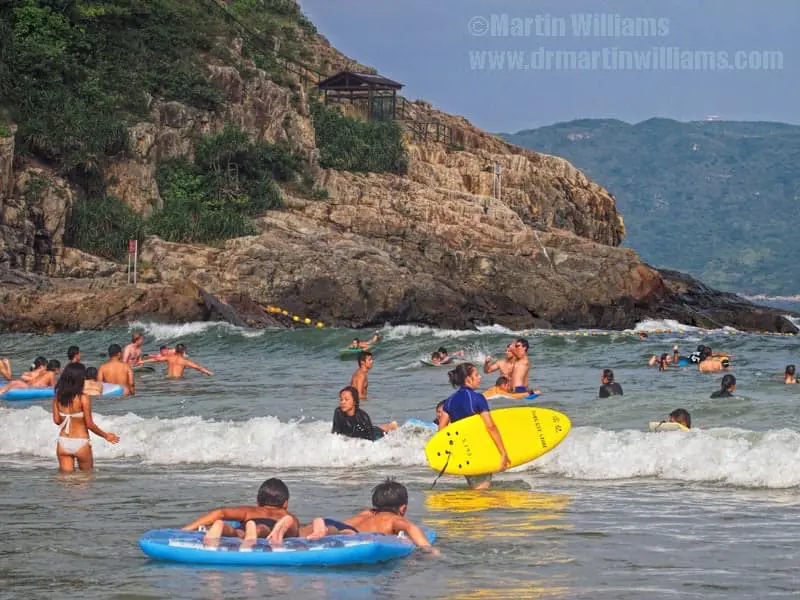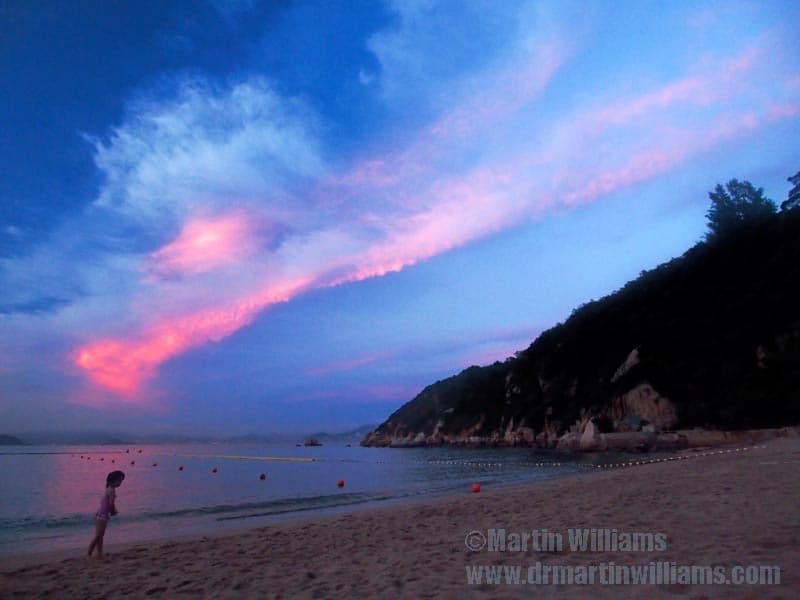 Everyone – whether in families or singletons – owes it to themselves to head out and make the most of what Hong Kong’s wonderful wilder side has to offer.
Everyone – whether in families or singletons – owes it to themselves to head out and make the most of what Hong Kong’s wonderful wilder side has to offer.
Some people might see having small kids as a showstopper when it comes to exploring the countryside. Yet kids can relish the outdoors, and science reveals a range of benefits, from better vision and disease resistance, to lower stress and improved concentration. With benefits applying to grown ups too, everyone – whether in families or singletons – owes it to themselves to head out and make the most of what Hong Kong’s wonderful wilder side has to offer.

Here are five suggestions for easygoing excursions.
Tips for Family Fun
It’s not a route march from A to B!
Even for a hike, make it about the journey, not simply a walk from one place to another.
Find fun stuff en route
Nurture curiosity, looking out for flowers, butterflies, birds, snakes [no touching!], great buildings, odd rocks and stones…. Halt at streams, beaches, viewpoints….
Don’t go out to the midday sun
During summer heat, avoid all-day trips, and favour early morning or afternoon outings.
Carriers beat strollers
Front and backpack carriers are a boon for flights of steps that are a darn nuisance with strollers.
Eat and drink
Snacks help maintain energy levels, and drinking often is vital when it’s hot.
Dragon’s Back, Big Wave Bay and Shek O
One of Hong Kong’s best short hikes heads up and along the spine of Dragon’s Back, southeast Hong Kong Island. The trail passes through woodland, with a couple of tiny streams to entertain the smallest kids. There are uphill and downhill stretches with rough steps and a little scrambling to make for some adventure.
There’s only low vegetation on the ridge, which is surprisingly wild for Hong Kong Island, with magnificent vistas over hills and South China Sea. The final stretch of the Hong Kong Trail winds down to Big Wave Bay, but you can omit this by instead taking a bus or minibus to the coast.

When easterly winds blow, Big Wave Bay offers fun in the surf – paddling with infants, while bigger kids might be keen to rent a boogie board and ride the waves. Shek O has a bigger beach, plus top strolling past buildings to the headland, then across a footbridge to a scenic islet – Tai Tau Chau, where powerful waves may pound the cliffs.
From Shau Kei Wan, bus 9 heads to Shek O and (on weekends and public holidays) there’s a red minibus to Big Wave Bay; both pass a roundabout, soon after which a path uphill leads towards Dragon’s Back.
The Peak

Though all too easily dismissed as only for tourists, or taking visitors, the Peak has much to enjoy, including stroller-friendly roads and paths. Plus, the Peak Tram ride delights young kids.
The circuit of the Peak along Lugard and Harlech roads is a classic walk, along hillsides with shrubland and woodland, affording outstanding views of harbour and city to the north, greenery and sea to the south. For more of a challenge, take the side trail to a steep flight of steps up High West, with a vantage atop craggy slopes.
Walk up from the Peak Tram station, and you’ll come to Victoria Peak Garden, a park nestled in a small valley. This is a top place to relax, perhaps playing or picnicking on the grass. The Governor’s Walk starts here, making a half circuit of the Peak along which you may encounter few people.
You could leave the Peak on foot, too. Northwards, one route leads down through Lung Fu Shan Country Park, with the remains of an old fort, Pinewood Battery, dating from 1903. Perhaps you can stir imaginations by trying to picture Victoria Harbour at the time, or the battery coming under attack by Japanese forces during the Second World War.
To the south, Pokfulam Reservoir Road makes for a woodland walk downhill, with a chance for a spot of stream scrambling.
Cheung Chau
Walk off the ferry on a weekend or public holiday, and Cheung Chau might seem only fit for playing “sardines”. But, like Doctor Who’s Tardis, there’s more to the island than appears at first sight.

Beaches on the east coast are key attractions in summer. You first arrive at the largest, Tung Wan, but turn right and there’s smaller and often quieter Kwun Yam Wan. You can hire inflatable rings and rafts for bobbing around in the water, or kayaks and windsurfing boards for action sports.
The village has tight packed streets, with no private cars. Shops and temples are of some interest, but surely claustrophobic to many kids. Walk south along either coast, or ride a sampan from the public pier, and you’ll find coastal trails where you can explore bays and headlands, with few or no buildings in sight.
Cheung Po-tsai Cave is a noted destination in the southwest, but is little more than a cleft through weathered granite. Near it, a small path winds through mighty, to rocky shores and an inlet you can scramble around to pass a “hanging” rock, and reach the cove with Italian Beach.
On the opposite, southeast coast, the “Mini Great Wall” is a trail passing granite tors with names like Human Head Rock and Vase Rock.
Ngong Ping
High in the hills of Lantau, Ngong Ping is a tourist hotspot. Yet you can give the artificial “village” a miss, and perhaps just glance at the Big Buddha, while still finding there’s plenty to enjoy without mingling with the chattering masses.
Though the Tea Gardens have been abandoned, there’s still a path through the woods here, where you might find splendid big butterflies. The weird Wisdom Path loops by wooden poles inscribed with calligraphy; scramble above it and you can overlook Shek Pik Reservoir way below, and the lofty summit of Lantau Peak.
This is great hiking country. For a gentle outing, follow a tree walk, with information posts that may entice any tree geeks in the family. There’s a junction from where you can climb a little, then follow part or all the Nei Lak Shan around a hill overlooking the Big Buddha to the south, and the airport to the north.
You could also drop downhill, to a cluster of temples, and then turn onto the Tei Tong Tai Country Trail. “This is a hidden gem of Lantau,” a friend rightly noted. The trail crosses streams where you can cool off and check for frogs and fish; a bench gives grandstand views over the airport.
Wisdom Path symbol is by junction with Lantau Trail heading to Lantau Peak – don’t want this trail, but instead the path pretty much due north [the tree trail], to junction with Ngong Ping Fun Walk. From here, there’s short path to link with the circuit trail of Nei Lak Shan Country Trail.
Also, there’s Tai tong Tsai Country Trail: walk down to pass Po Lam Monastery, and head east to reach Tung Chung Road at Pak Kung Au [bus stop, phew!]
Hoi Ha and Pak Sha O
Hoi Ha and Pak Sha O are two contrasting villages in the northeast Sai Kung Peninsula, reached by minibus from Sai Kung.

Hoi Ha is in itself hardly worth crossing a road for – but is in a superb setting. It’s at the south of Hoi Ha Wan, a bay designated as marine park, and most land around it is in country park.
The marine park is noted for its diverse marine life, especially corals. There’s even a coral area close inshore, by a small pier around 10 minutes’ walk east of the village. You don’t need to be an expert diver to visit; instead just pull on a mask and snorkel, take care getting into the water, and you can see brain and plate shaped corals, along with colourful fish, sea cucumbers, crabs and more.
There’s an old lime kiln, where villagers once baked corals and shells. A small beach is a fair place to swim. Walk west from Hoi Ha, and across the mouth of a large stream, and there’s another stretch of sand where you can admire the area.
Around half an hour walk inland is Pak Sha O. Nestled in a wooded valley, this deserves safeguarding as the best remaining Hakka village in Hong Kong, but only the grandest building has official protection. If you look around, be mindful of people living here; and maybe ask how can you help this and other gems of wild Hong Kong can be conserved, so your kids can enjoy them long into the future.










